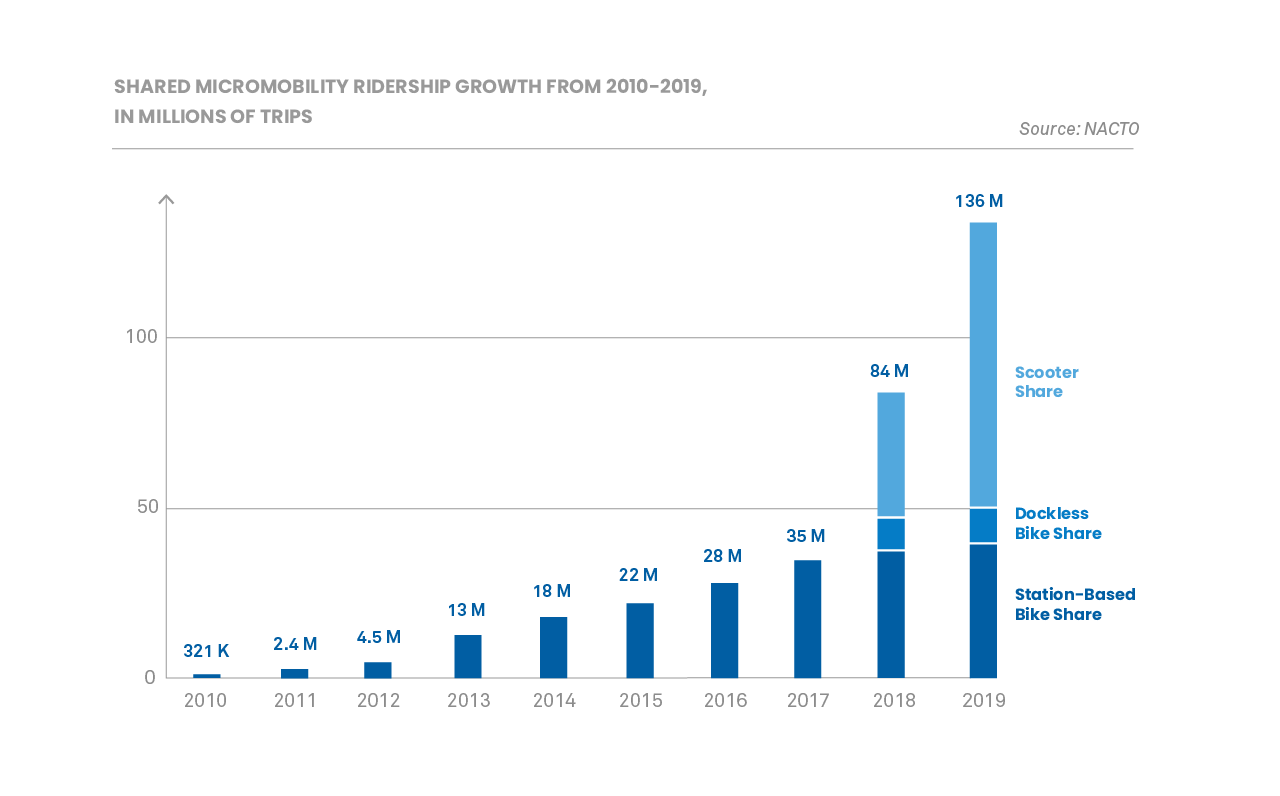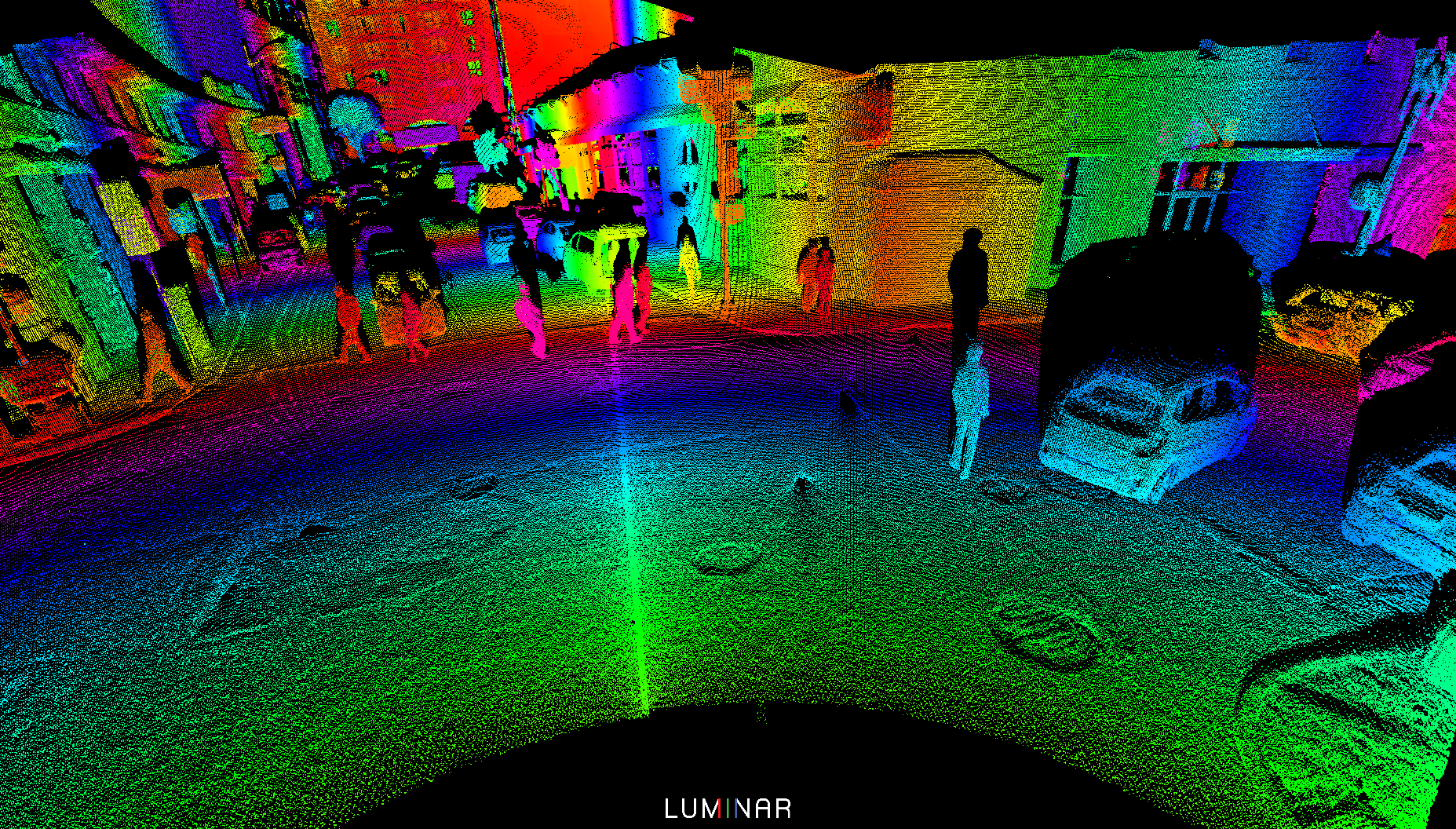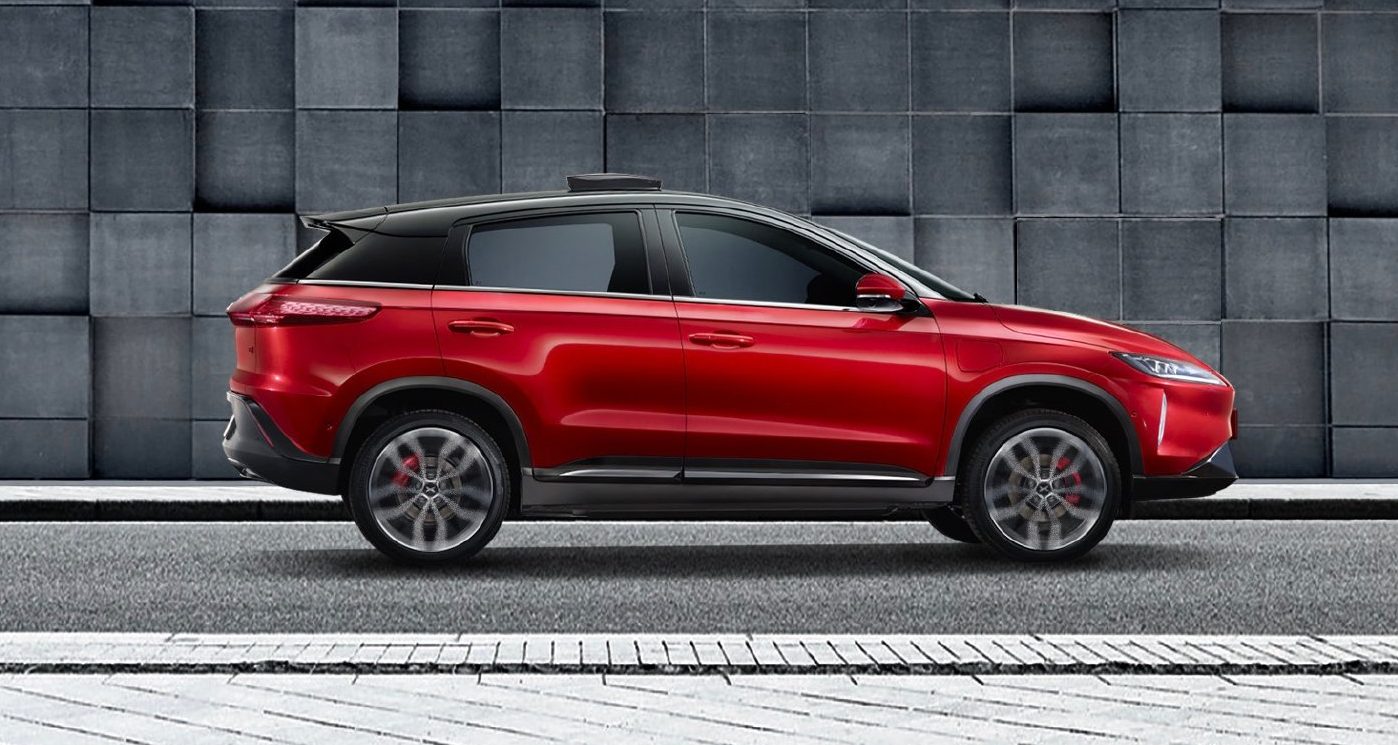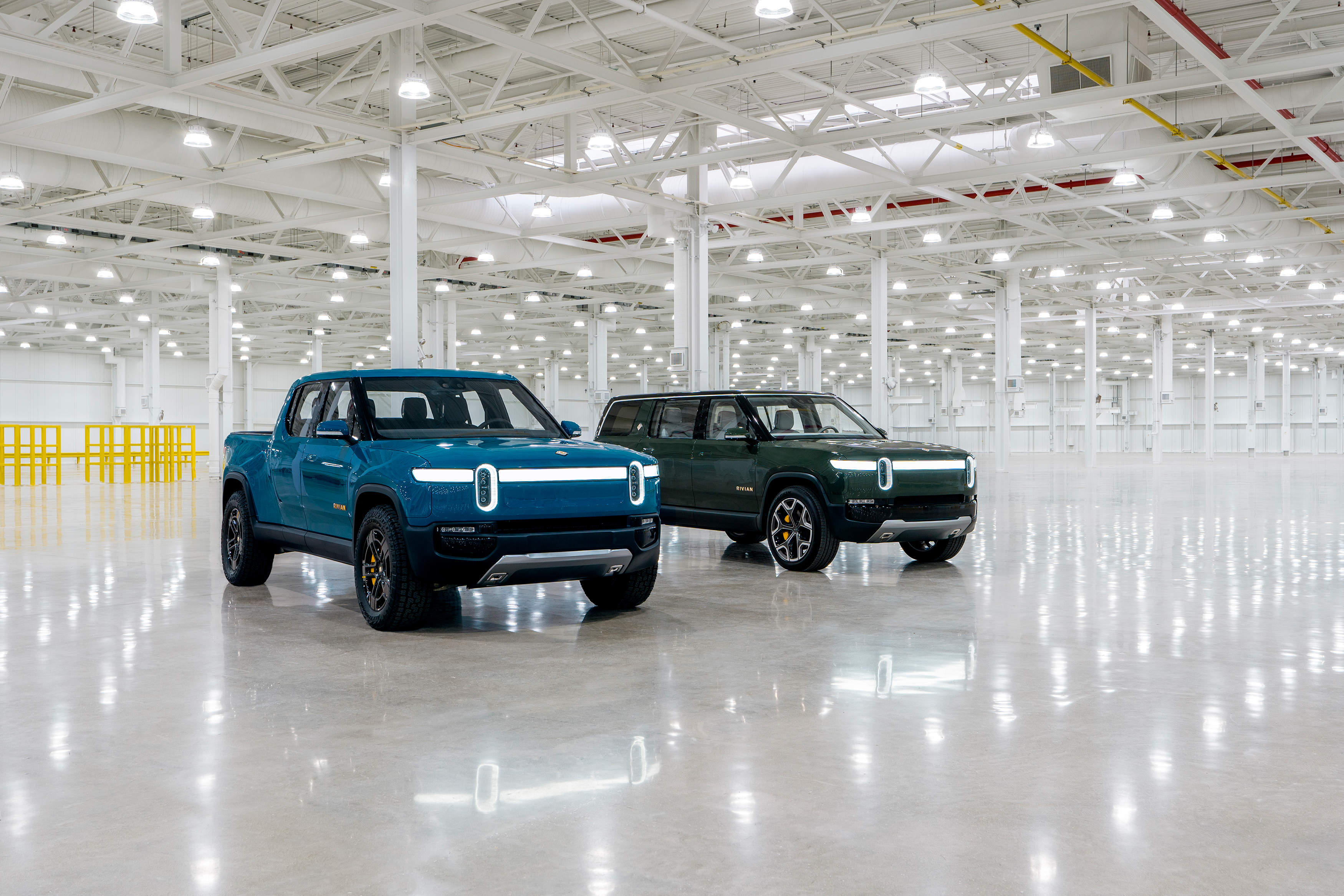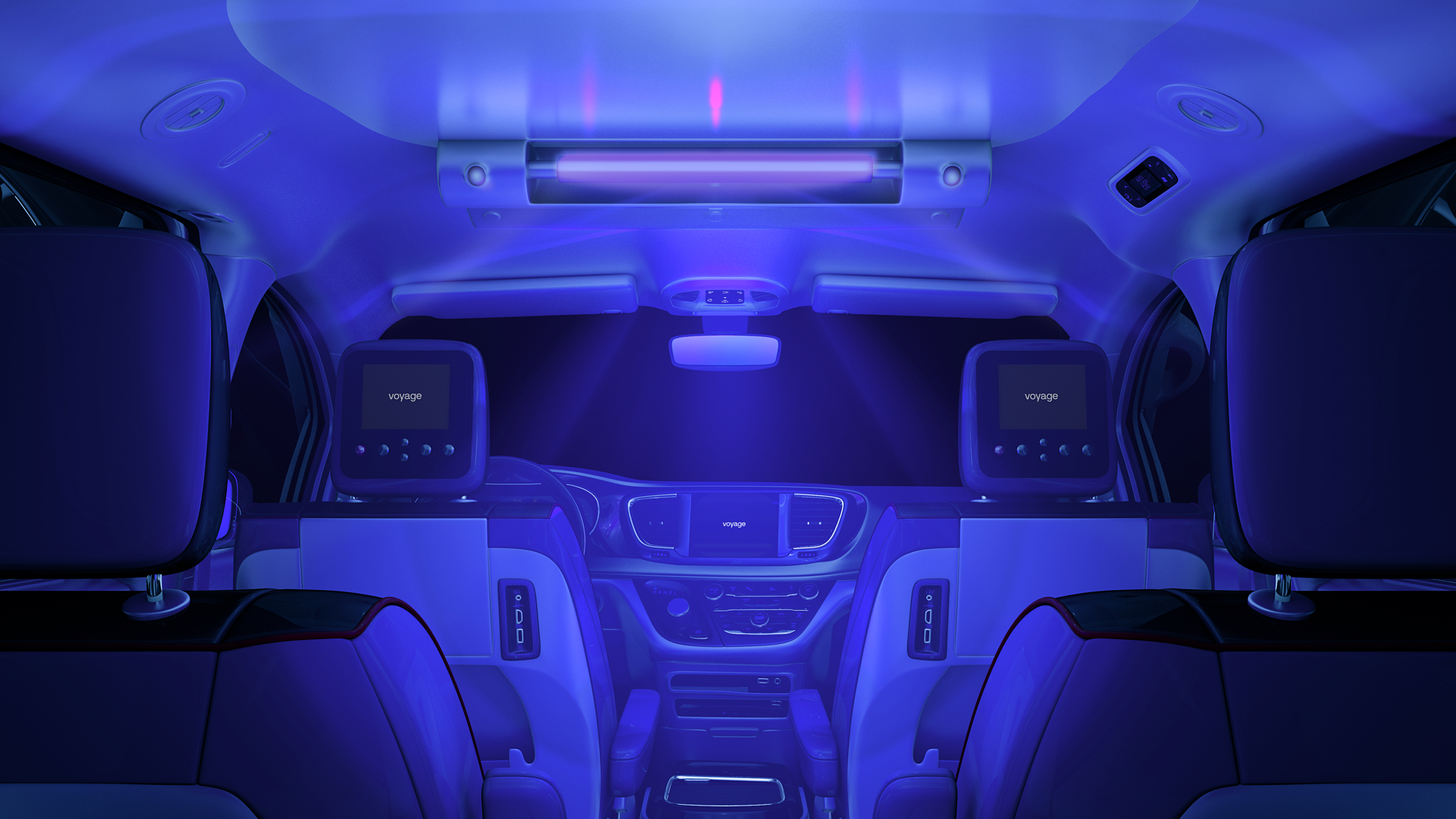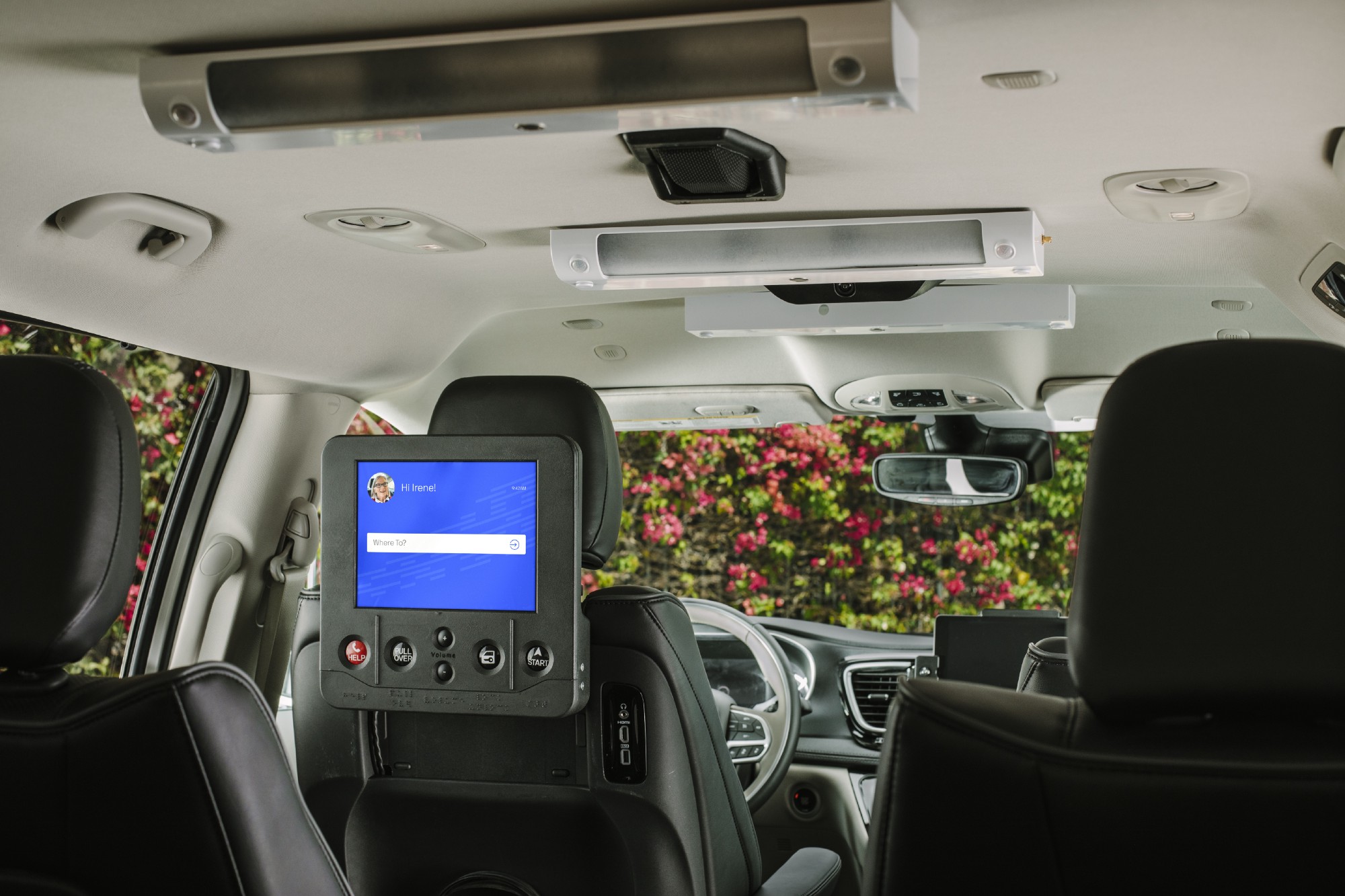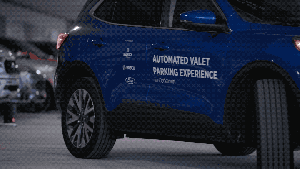Luminar takes the SPAC path and Voyage lifts the hood on its next-gen robotaxi – TechCrunch
The Station is a weekly publication devoted to all issues transportation. Sign up here — just click The Station — to receive it every Saturday in your inbox.
Hi there and welcome again to The Station, a publication devoted to all the current and future methods individuals and packages transfer from Level A to Level B.
I’ll skip the everyday wind up and get proper to issues this week. We’ve bought SPACs, enterprise offers and micromobility information together with a peek at one AV firm’s latest car.
I wished to say one merchandise earlier than we launch as a result of it speaks to a bigger subject of security and the way some shared mobility startups are turning to tech in an try to enhance it.
Shared electrical moped startup Revel resumed operations in New York Metropolis a month after shutting down its service following a number of deaths. The startup’s blue mopeds (3,000 of them) that had turn out to be a well-known sight in New York Metropolis are again, however with plenty of new protocols and options aimed toward boosting security and assuaging metropolis officers. Revel is leaning heavily on tech, and particularly its app, to enhance security, together with coaching movies and exams, a helmet selfie function that requires photographic proof the consumer is carrying a helmet and a neighborhood reporting device. The query is, will this effort be enough?
Alright, let’s go!
E mail me anytime at kirsten.korosec@techcrunch.com to share ideas, criticisms, provide up opinions or ideas. You can even ship a direct message to me at Twitter — @kirstenkorosec.
Micromobbin’
Keep in mind final week once I informed y’all about California Assembly Bill 1286? Right here’s a fast refresher: the invoice handed the Meeting in 2019 and moved over to committee inside the Senate. It sat untouched till this month, when it popped up and handed a committee vote, an motion that despatched it to the complete Senate.
To say the micromobility business was caught off guard, is perhaps an understatement. The motion set off alarm bells and a coalition of micromobility corporations, advocacy teams and bike share operators despatched a letter to Senate management arguing that the invoice was an existential menace to shared micromobility within the state. The group was particularly involved with a line within the invoice that might prohibit corporations from placing a legal responsibility waiver within the consumer settlement.
That language was eliminated this week, prompting not less than a number of emails with feedback like “micromobility in California has been saved.”
The Nationwide Affiliation of Transportation Officers released its annual report on the expansion and use of shared micromobility corresponding to bike share, e-bike share and scooter share in the USA. This report focuses on 2019 ridership information, nevertheless, NACTO additionally weighs in a bit on the primary half of 2020.
The examine discovered that folks within the U.S. took 136 million journeys on bikes and scooters in 2019 — a 60% enhance from the earlier yr. Of these journeys, 40 million have been on station-based bike share methods. The remaining 96 million journeys have been on dockless methods with 10 million on ebikes and 86 million on scooters.
That doesn’t imply it was a balanced image. NACTO reported that scooter growth was in some instances unstable as corporations exited markets on the finish of the yr (previous to the pandemic), presumably attributable to over-competition and different market pressures.
Shared micromobility journeys have been on common 11 to 12 minutes lengthy and for a distance of 1 to 1.5 miles. Brief journeys are vital, NACTO stated in its report, noting that 35% of all U.S. automobile journeys are underneath 2 miles.
Adam Kovacevich, Lime’s head of North America and APAC Authorities Affairs, known as the numbers “eye popping” in an emailed assertion, including that “Individuals are voting with their ft, and so they clearly need extra scooters and dockless bikes of their cities.”
We’re not completed but; yet another merchandise of notice. Leap returned to the Sacramento area on Saturday. By means of an settlement with SACOG, Lime stated it’s now the “unique” regional bikeshare operator for the area.
Deal of the week
Luminar, the lidar startup based in 2012 by whiz child and Thiel fellow Austin Russell, has taken the SPAC path to the general public markets. SUMMER OF THE SPAC CONTINUES!
The lidar startup introduced it was merging with particular function acquisition firm Gores Metropoulos Inc., with a post-deal market valuation of $3.4 billion. The SPAC merger comes simply three months after Luminar hit a important milestone and introduced that Volvo would begin producing automobiles in 2022 outfitted with its lidar and a notion stack. Volvo plans to make use of the Luminar know-how to deploy an automatic driving system for highways in its manufacturing automobiles.
Russell informed me in a latest interview that they wished to go public in some unspecified time in the future, however the momentum from the Volvo deal together with curiosity inside public markets led the corporate to take the SPAC route.
Luminar is the most recent startup — and second lidar firm — to show to SPACs this summer season in lieu of a standard IPO course of. In June, Velodyne Lidar struck a deal to merge with particular function acquisition firm Graf Industrial Corp., with a market worth of $1.8 billion. 4 electrical car startups have additionally skipped the standard IPO path in latest months, opting as a substitute to go public by way of a merger settlement with a SPAC, that are also referred to as clean verify corporations. Canoo, Fisker Inc., Lordstown Motors and Nikola Corp. have gone public by way of a SPAC merger this spring and summer season. Shift Applied sciences, a web based used automobile market, additionally used a SPAC to go public.
In the meantime, Chinese language electrical automaker Xpeng Inc. made its public market debut the old style approach. Though this conventional IPO path nonetheless packed in some surprising monetary thrills. Regardless of escalating tensions between the U.S. and China, the corporate raised more than it expected in its preliminary public providing.
Xpeng, which started buying and selling Thursday on the New York Inventory Change underneath the ticker image XPEV, stated in a submitting that it bought 99.7 million shares for $15 every, elevating about $1.5 billion by way of its preliminary public providing. The automaker had initially deliberate to promote 85 million shares with a worth steerage of between $11 and $13.
Xpeng will want the capital. The corporate faces an more and more crowded pool of electrical automakers in China, together with Tesla, Li Auto and Nio. Shares of Xpeng closed up at $22.79 on Friday.
Different offers that bought my consideration …
CoPilot, a cell app for purchasing and proudly owning automobiles, raised $10 million in a brand new Sequence A funding spherical led by Subsequent Coast Ventures, with participation from Max Levchin’s SciFi Ventures and Arthur Patterson, co-founder of Accel Companions, together with present traders Chicago Ventures. The funding brings the corporate’s complete outdoors funding to $17 million.
curbFlow, a curb administration startup that makes use of a community of laptop imaginative and prescient gadgets to detect obtainable parking spots, raised $8 million in seed stage funding led by Basic Catalyst and Initialized Capital. Doordash is its first paying buyer. Preserve a watch out for an extended piece on curbFlow; I interviewed the founder Ali Vahabzadeh concerning the startup and the place he sees it evolving. If the identify Ali Vahabzadeh sounds acquainted, it ought to. He’s the co-founder and former CEO of Chariot, the on-demand shuttle service that Ford acquired after which killed off.
Supply Hero, the Berlin-based restaurant supply firm that operates primarily in rising markets, acquired Dubai-based grocery delivery platform InstaShop. The acquisition values the corporate at $360 million, $270 million upfront plus an extra $90 million primarily based on InstaShop assembly sure development targets, in keeping with the corporate. Buyers in InstaShop are absolutely celebrating proper now. The 5 year-old startup had raised simply $7 million earlier than being acquired.
Firefly, which provides Uber and Lyft drivers a digital show to make extra cash by working advertisements, acquired Strong Outdoor. The corporate stated it has additionally turn out to be the promoting accomplice for fleet operator Sally.
Fox Robotics, the Austin-based startup that builds automated forklifts, raised $9 million in a Sequence A spherical led by Menlo Ventures. The most recent spherical brings its complete funding thus far as much as $13 million, with assist from earlier traders Eniac, Famiglia, SignalFire, Congruent, AME and Joe.
Motiv Energy Methods, an organization that builds all-electric chassis and software program methods for the electrification of medium-duty vans and buses, stated it has secured $15 million in further funding from GMAG Holdings Corp. The corporate that the funding will likely be made by way of convertible notes which can be anticipated to be transformed right into a Sequence C funding spherical, which Motiv is within the strategy of elevating.
Shopmonkey, a San Jose, Calif.-based SaaS startup that serves auto restore outlets, raised $25 million in a Sequence B funding spherical led by Bessemer Enterprise Companions with participation from Index Ventures, e.ventures and I2BF.
Zoomo, a three-year-old electrical bike platform marketed to gig financial system supply staff, raised $11 million from a Sequence A funding spherical led by Australian Clear Vitality Finance Company. Zoomo was really Bolt Bikes till this previous week. The corporate introduced its new identify together with its funding spherical. The spherical additionally included fairness from Hana Ventures and present traders Maniv Mobility and Contrarian Ventures, along with enterprise debt from OneVentures and Viola Credit score.
Folks: layoffs, hiring and strikes
It’s been a minute since I wrote about hirings and firings and such. Two bits of hiring information bought my consideration this week.
First up, Bloomberg reported that Rivian employed former Tesla government Nick Kalayjian to guide its engineering. Kalayjian is changing Mark Vinnels, a former government a McLaren Automotive.
You may recall that relations between Rivian and Tesla are a bit prickly in the mean time. Tesla filed a lawsuit in July towards Rivian and 4 former employers on claims of poaching expertise and stealing commerce secrets and techniques. Particularly, Tesla claimed that Rivian instructed a not too long ago departed Tesla worker concerning the forms of confidential data it wanted.
Rivian not too long ago fired again. Rivian filed movement to dismiss the lawsuit, arguing that two of the three claims within the case fail to state enough allegations of trade-secret theft and poaching expertise and as a substitute was an try and malign its popularity and harm its personal recruiting efforts.
It needs to be famous that Kalayjian didn’t come immediately from Tesla; he had a quick stint at San Francisco-based Loads Inc., in keeping with his Linkedin profile. Nonetheless, Kalayjian spent a decade at Tesla, and his transfer to Rivian seemingly bought the eye of his former employer.
Convoy, the digital freight community that connects truckers with shippers, has employed former Expedia CEO Mark Okerstrom as the corporate’s president and Chief Working Officer, efficient August 31, 2020. Okerstrom will likely be accountable for Convoy’s finance, operations, gross sales, advertising and marketing, provide, and market development groups. Okerstrom wrote a blog about what prompted to depart Expedia after a decade.
Convoy is barely 5 years outdated, however it’s turn out to be an enormous within the nascent digital freight enterprise. The corporate has managed to draw a slew of high-profile traders corresponding to Jeff Bezos, Salesforce CEO Marc Benioff, Greylock Companions, Y Combinator, Cascade Funding (the non-public funding car of Invoice Gates) and Code.org founders Hadi and Ali Partovi. Even U2’s Bono and the Edge have invested in Convoy.
Final November, Convoy introduced it had raised $400 million in a Sequence D funding spherical, funding that might be used to scale its enterprise amid an more and more aggressive market. Convoy stated on the time that its post-money valuation to $2.75 billion.
AV Highlight: Voyage
Autonomous car startup Voyage is a smaller enterprise than its business friends, when it comes to capital raised and variety of staff. However that doesn’t imply Voyage isn’t making strikes — and progress.
The three-year-old startup exams and operates a self-driving car service (with human security operators) in retirement communities in California and Florida. They began by modifying Ford Fusion automobiles and later retrofitted FCA’s Chrysler Pacifica Hybrid minivans with its autonomous car know-how. Final yr, Voyage partnered with FCA to offer next-generation purpose-built Pacifica Hybrid automobiles which have been developed for integration of automated know-how. These automobiles include customizations corresponding to redundant braking and steering which can be mandatory to securely deploy driverless automobiles. (The partnership wasn’t introduced till this spring).
Now, Voyage is lifting the veil on its third-generation robotaxi, known as G3. CEO Oliver Cameron tells me G3 is designed to drive with out the necessity of a human security operator, outfitted with COVID killing U-VC {hardware} and half the price of its earlier second-generation (G2) car.
It might sound odd for the CEO of an AV firm to exclaim that its car is designed to be driverless. What Cameron means is that the car technology has progressed to some extent the place it has all the mandatory redundancies and automotive grade {hardware} to maneuver past testing and into business driverless operations. Voyage factors to a few applied sciences that get it there.
First, there’s the mind of the G3 — internally known as Commander — that’s powered by its notion, prediction and behavioral modules. Commander runs atop a safety-certified middleware and monitored by self-diagnostic methods. Then there’s the collision mitigation system known as Defend that acts as a backup system to convey the car to a protected cease if mandatory. After which lastly, a distant operations function known as Telessist. When the mind, or Commander, faces a novel or chaotic visitors scenario it has the aptitude to ask for help.
Voyage has talked about these components earlier than, however it has by no means actually dug into the compute aspect of issues. As Cameron famous to me, “it was once you had to decide on between automotive grade and efficiency. Now, we have now each.”
Voyage labored with Nvidia on the compute. It additionally concerned one other firm, which took the Nvidia boards and made them automotive grade. “So suppose ruggedized aluminum, suppose security licensed, suppose liquid cooling — all of the issues you’ll want to do that safely and in a car,” Cameron stated.
Additionally of notice, Voyage is utilizing Blackberry’s QNX working system within the G3. This technology additionally has plenty of options aimed toward its senior citizen prospects, together with two-way voice, additional steps to assist mobility-challenged riders get out and in of the car, additional lighting, and an in-cabin consumer interface that caters to vision-impaired riders.
Contained in the car, Voyage has added U-VC {hardware} to kill COVID and different airborne ailments. Cameron stated they knew it could be important to seek out some cost-effective approach of cleansing the automobiles. A buddy instructed that he look into ambulances.
“Ambulances have actually discovered tips on how to stop contamination from one individual to a different after every journey,” Cameron stated. “It seems they primarily use UV-C and it seems in a number of research and publications that UV-C at a sure depth, kills COVID.”
The UV-C lights, offered by an organization known as GHSP, are positioned in every row of the car.
Regardless of the additional price of the UV-C lighting and different options, Cameron stated the G3 remains to be 50% cheaper than its earlier technology.
“Up to now 12 months, we’ve seen our sensor prices lower by 65% and our compute prices lower by 25%, leading to a car that’s about 50% cheaper than the prior technology. And that’s places us on a viable path to generate profits.”
The G3 isn’t fairly prepared for prime time. Beta variations of the G3 are being examined on the street in San Jose. Manufacturing automobiles and business driverless are anticipated to comply with subsequent yr.
Notable reads and different tidbits
A great deal of different mobility information went down this week. Let’s test it out.
Bentley’s Bentayga packed in a collection of surprises for TechCrunch’s Matt Burns. Right here’s what he discovered over 24 hours with the $177,000 sport utility car.
Blackberry is pushing into China. The corporate introduced it will likely be powering the Stage 3 driving area controller of Xpeng, one of many most-funded electrical car startups in China, and Tesla’s native challenger.
Bollinger Motors, the Michigan-based startup identified for its rugged electrical SUV and pickup truck, unveiled a delivery van concept known as the DELIVER-E that it plans to start out producing in 2022. This shouldn’t be confused with the E-Chassis, now known as Chass-E, that the corporate designed for Class 3 business automobiles.
Elon Musk known as an tried cyberattack towards Tesla “critical,” a remark that confirmed the corporate was the goal of a foiled ransomware attempt at its huge manufacturing facility close to Reno, Nevada. The Justice Division launched a criticism that described a thwarted malware assault towards an unnamed firm in Sparks, Nevada. It wasn’t clear if the corporate was Tesla till Musk publicly commented on it. Russian nationwide Egor Igorevich Kriuchkov, 27, allegedly tried to recruit and bribe a Tesla worker to introduce malware within the firm’s community, in keeping with the criticism.
Ford, Bosch and Bedrock are demonstrating automated valet parking in downtown Detroit. This method is designed to permit drivers to exit a car and the car would park itself within the parking construction. You may recall that Bedrock additionally has a pilot with automated shuttle startup May Mobility.
GM is shifting the engineering staff accountable for the mid-engine Chevrolet Corvette to the corporate’s electric and autonomous vehicle programs to “push the boundaries” on what its future EV battery methods and parts can ship, in keeping with an inside memo from Doug Parks.
Monet, a three way partnership between SoftBank Corp. and Toyota Motor Corp. unveiled two tailored vans. One of many vans pumps contemporary air by way of the car to scale back the danger of COVID-19 publicity, Reuters reported.
Pony.ai, the self-driving startup Pony.ai, and Bosch reached an settlement to discover the way forward for automotive maintenance and repair for autonomous fleets. The businesses began in July a pilot of the robotaxi fleet upkeep at an undisclosed Bosch Automobile Service location within the San Francisco Bay space.
Scout Campers unveiled its new Kenai unit, a camper that packs an enormous quantity of apparatus into its small footprint, together with a 160-watt photo voltaic panel, CNET’s Roadshow reports.
Xwing, the autonomous aviation startup, revealed its go-to-market strategy, a plan that features specializing in regional 500-mile distance cargo flights.
 hotebike
hotebike


